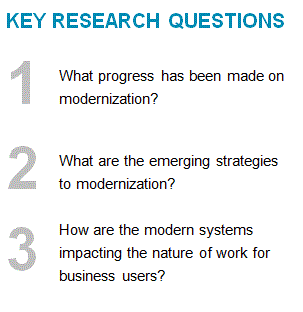The good news is that much has changed since Celent started tracking the topic of legacy modernisation almost a decade ago, and there are certainly fewer types of legacy systems around than even a few years back. However, the dinosaur is not dead.

In this report, Celent takes a look at the issue of core engine replacement from the perspective of insurers. The report is part of an ongoing series (published every two years since 2008) exploring the progress that insurers are making in this area.
Four years ago, one in four insurers reported being well into the program of change. Two years ago, the figure was at 50%. Today, almost two out of three insurers have made such progress.
“This is the offset from companies moving out of early stages of evaluation into making progress,” says Catherine Stagg-Macey, an executive advisor with Celent’s Insurance practice and author of the report. “However, it should also be recognized that knowing your direction and making progress are not completion, and for many, especially in the life industry, a substantial programme of work lies ahead before they can claim success.”
This report will be of interest to insurers to get a sense check of the industry’s progress. Data in the report can be used in a variety of ways, including educating program sponsors, baselining against market experience, and being forewarned about matters such as likely areas of cost overruns. There are clear pointers to where the company might expect increased business responsibility of maintenance in post-implementation
Vendors that sell core systems will find the data and findings in the report useful in evolving their market and value propositions, as well as identifying potential related service offerings. Vendors offering services around core solutions can also draw upon this report to refine and strengthen partnering propositions.
This report contains 13 charts and 4 tables.






